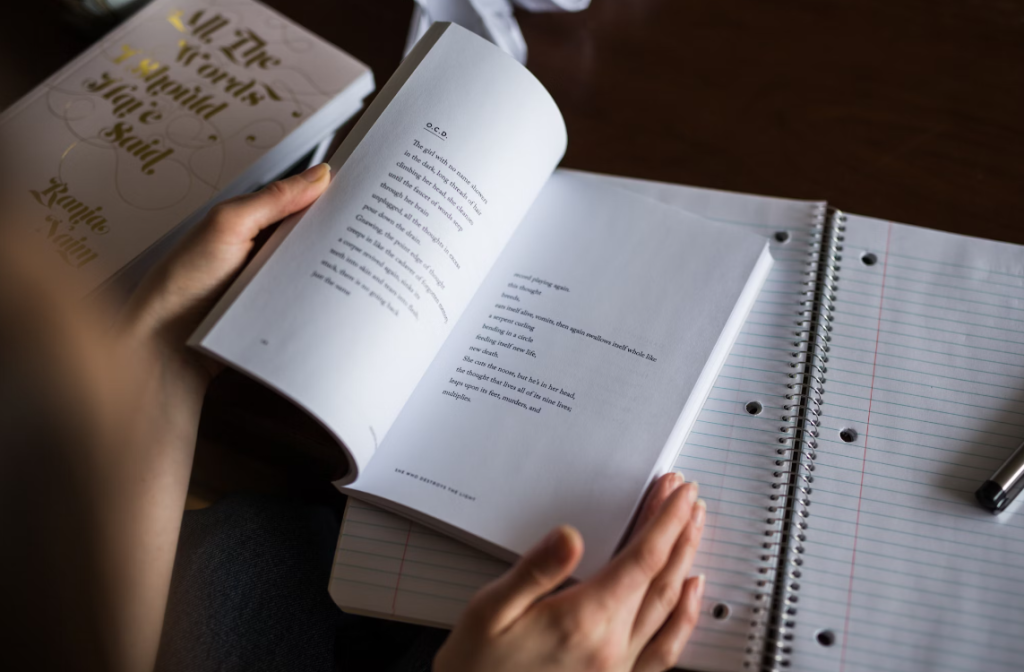The Secret of Memorable Writing
Have you ever wondered why certain lines from literature, speeches, or even pop songs stick in your mind, echoing long after you’ve read or heard them?
It’s not just the meaning or the message behind the words; it’s the structure and rhythm that make them memorable.
This blog post dives into a fascinating discussion between Mark Forsyth, a renowned author, and David Perell, host of the “How I Write” podcast, on creative writing tips and to uncover the secrets of memorable writing.

The Power of Progressio: Creative Writing Tips
Mark Forsyth introduced a rhetorical technique called progressio in his conversation with David Perell.
This technique, which involves the use of antitheses—a long series of opposites—makes lines memorable.
Here are some famous examples:
- Charles Dickens in “A Tale of Two Cities”: “It was the best of times, it was the worst of times.”
- Katy Perry in her song “Hot n Cold”: “You’re hot then you’re cold, you’re yes then you’re no, you’re in then you’re out, you’re up then you’re down.”
- The Bible in Ecclesiastes: “A time to weep, and a time to laugh; a time to mourn, and a time to dance.”
These examples show that progressio is not just a tool for high literature or sacred texts.
It finds its way into pop music, advertising, and political speeches, demonstrating its universal appeal.

Why Use Progressio?
- Memorability: The repetitive and balanced nature of progressio makes the phrases easy to remember.
- Clarity and Impact: By stating something and its opposite, you emphasize the totality of what you’re saying, dramatizing the idea and ensuring it resonates with the listener or reader.
- Emotional Engagement: The rhythmic pattern draws people in, signaling that this part of the message is important.
Forsyth mentions that this technique is a way to “manipulate” the reader’s attention, guiding them when to calm down and when to pay attention.
This is similar to how a soccer commentator’s voice rises as the game action intensifies, cuing the audience to pay attention.
The rhetorical build-up in progressio serves as a signal that something significant is being communicated.
The Formulaic Approach: Why It’s Not a Bad Thing
Mark Forsyth argues that using rhetorical devices like progressio is not only a way to create beauty but also a practical tool for effective communication.
In the podcast, Forsyth discusses how he was drawn to these techniques through his scientific background, appreciating the structure and predictability they bring to writing.
- Examples of Rhetorical Techniques in Famous Lines:
- Chiasmus: “Ask not what your country can do for you; ask what you can do for your country.” – John F. Kennedy
- Anadiplosis: “Fear leads to anger; anger leads to hate; hate leads to suffering.” – Yoda in Star Wars
- Diacope: “Free at last, free at last, thank God Almighty, we are free at last.” – Martin Luther King Jr.

False Memories and the Power of Rhetoric
A particularly fascinating point that Forsyth brings up is the idea of false memories created by powerful rhetorical structures. He refers to a line often remembered from The Wizard of Oz: “Fly, my pretties, fly!” Interestingly, this line was never actually said in the movie.
The line we think we remember is so powerful because of its rhetorical structure—diacope—that it has inserted itself into our collective memory.
This phenomenon underscores how our brains are wired to remember certain patterns, which rhetorical devices cater to perfectly.
Forsyth explains that rhetorical techniques fit into the “memory receptors” of our brains, making the content more memorable.
Rhetoric in the Modern World: Where Has It Gone?
Forsyth discusses the decline in the study and application of rhetoric. He attributes this to the rise of Romanticism, which emphasized passion and spontaneity over structured, formulaic writing.
However, he points out that even the Romantics often used rhetorical devices to enhance their works.
- Why Rhetoric Matters Today:
- Advertising: Rhetoric is everywhere in advertising because it makes slogans catchy and memorable. Think of taglines like “Anytime, Anyplace, Anywhere” (Martini).
- Music and Pop Culture: Rhetorical devices make lines in songs and movies stick. For example, “Bond, James Bond” uses diacope, and “Run, Forrest, run” uses epizeuxis (repetition of a word for emphasis).
- Political Speeches: Politicians use rhetorical devices to make their points clear and memorable. JFK and Martin Luther King Jr. were masters of these techniques.
- Advertising: Rhetoric is everywhere in advertising because it makes slogans catchy and memorable. Think of taglines like “Anytime, Anyplace, Anywhere” (Martini).
Practicing Your Scales: Learning to Write with Rhetoric
Forsyth likens writing to playing jazz. Jazz musicians practice their scales for hours so that when they perform, their improvisations flow naturally and beautifully.
The same goes for writing: mastering rhetorical techniques allows writers to improvise and create memorable lines spontaneously.
- Practical Steps for Writers:
- Learn Iambic Pentameter: This is the foundational rhythm of English poetry. Practice by creating nonsense lines just to get the rhythm in your head.
- Practice Using Rhetorical Devices: Start with simple devices like anaphora (repetition of a word at the beginning of clauses) or epistrophe (repetition at the end of clauses). Incorporate these into your everyday writing.
- Read and Analyze: Study the speeches of great orators, the lyrics of impactful songs, and the lines of memorable poems. Notice the patterns and try to emulate them.
- Learn Iambic Pentameter: This is the foundational rhythm of English poetry. Practice by creating nonsense lines just to get the rhythm in your head.

Writing That Resonates
In conclusion, the conversation between David Perell and Mark Forsyth sheds light on the timeless power of rhetorical techniques.
These tools are not relics of a bygone era but essential methods for creating writing that resonates, moves, and sticks.
Whether you’re crafting a poem, writing a speech, or even working on a catchy marketing slogan, employing techniques like progressio, chiasmus, and diacope can elevate your words, ensuring they remain etched in the minds of your audience.
As Forsyth highlights, it’s not just about what you say—it’s how you say it. And with the right rhetorical tools, you can make your words fly.
(Source : The “How I Write” podcast by David Perell featuring Mark Forsyth)




